
Capabilities
Sandia’s Radar Intelligence Capabilities
Sandia continues to advance the next generation of Synthetic Aperture Radar (SAR) and Intelligence, Surveillance and Reconnaissance (ISR) systems with highly integrated, miniaturized, and fully mission-capable radar systems to impact tactical Surveillance and Reconnaissance (S&R) capabilities
Sandia has a broad range of engineering, testing, and analysis capabilities for Radar ISR systems. Since the late 20th century, Sandia’s mission remains dedicated to producing the next generation of exquisite radars with the ability to shrink sensor size, increase resolution, improve image quality, and advance real–time on–board processing. Demonstrated capabilities in user interaction design and evaluation ensure that Sandia’s systems generate accessible, timely, and useful information for a broad range of decision-making environments.
Along with its expertise in hardware and software design and development, Sandia operates state-of-the-art facilities, centers, and technologies enabling breakthrough developments in ISR radar systems. Sandia develops technologies with the total system concept in mind, ensuring successful integration over the entire process, from mission engineering and system development through image exploitation and interaction designs that enable exquisite human detection and characterization performance for high-consequence decision-making.
KEY PRODUCTS
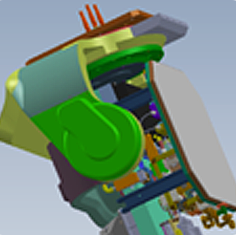
RADARs (Multimode, Real-Time, High Resolution
Sandia delivers pathfinder Radar Intelligence, Surveillance, and Reconnaissance (ISR) systems for a broad range of missions and applications. Sandia specializes in developing wide-area imaging at fine resolution with minimum constraints on atmospheric conditions, processed on-board and in real-time. Since the mid-1980s, Sandia remains successful in the full system design for Synthetic Aperture Radar (SAR) and other ISR systems.
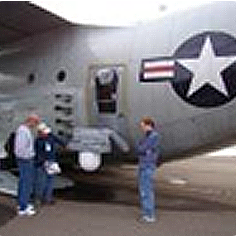
Intelligence, Surveillance & Reconnaissance (ISR) System Integration
Sandia’s radar sensor systems leverage developments in small, low-power, embedded processors, along with custom electronics miniaturization, extreme system integration, and intelligent application of commercial off-the-shelf (COTS) interfaces and form factors. The key to the next generation of small, compact sensor design is the co-location and integration of radar functionality, which allows employment on a multitude of manned platforms and Unmanned Aerial Vehicles (UAVs). Sandia capitalizes on multi-mode sensors with onboard real-time processing to enable advanced functionality and adaptability to meet dynamic situational requirements. Additionally, Sandia’s Human Analytics research and development laboratory ensures that interfaces and workflows maximize the usability of its systems for high-consequence analysis and decision-making applications.
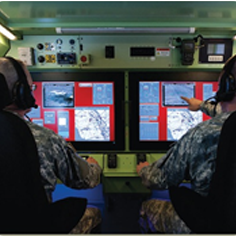
Data Analysis & Exploration
Sandia enables the analyst by providing timely, accurate and complete data utilizing advanced technologies and algorithms. Tasking, Processing, Exploitation, and Dissemination (TPED) of high-quality real-time imagery supports enhanced understanding and better informed decision-making. Sandia continues to pursue improvements and extensions to its radar sensor design architectures through advanced imaging, tracking, and exploitation algorithms. Further, Sandia develops custom TPED capabilities based on the challenges and opportunities of its customer’s specific mission needs.
FEATURED CAPABILITIES
System Enablers
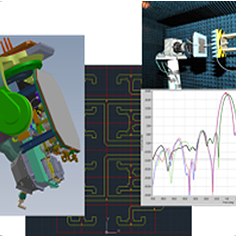
Facility for Advanced RF and Algorithm Development (FARAD)
The Facility for Advanced Radar and Algorithm Development (FARAD) is an in-house, high-performance, multi-mode radar capability for the continued advancement of Sandia Intelligence, Surveillance, and Reconnaissance (ISR) capabilities. The facility provides a test bed laboratory toolset that can support external partner programs as well as Sandia’s internal research and development. Research and development activities within FARAD focus on radar hardware and software, but additional interests include phenomenology, data collection, algorithm development, and data analysis.
FARAD is available for developing and testing image formation and exploitation algorithms, different radar modes, and different radar bands. Sandia maintains an in-house development radar to continuously advance Synthetic Aperture Radar (SAR) technology. The FARAD radar is a major component of FARAD and can be operated at Ku and Ka bands at both single POL (all bands) or full polarization (X-band). FARAD algorithms are capable of producing imagery fine resolutions as well as associated change detection products.
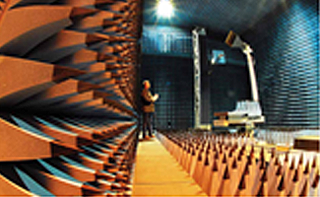
Facility for Antenna and Radar Cross Section (RCS) Measurements (FARM)
The Facility for Antenna and Radar Cross Section (RCS) Measurements (FARM) provides capabilities for antenna testing and engineering, and radar cross section (RCS) measurements. It offers advanced instrumentation for measuring and obtaining data for a wide range of antenna and electromagnetic (EM) technologies. Research and data gathering are conducted within an evaluation infrastructure comprised of a broad-band, high resolution compact range; outdoor measurement range; broad-band, high isolation measurement chamber; near-field measurement system; and a precision Gaussian-beam measurement system.
- Full radiation density pattern (RDP) characterization
- Characterization of antennas in both far field and near field configurations
- Measurement of radar cross sections (RCS)
- Characterization of RF-transmission properties of materials
- Measurement of electromagnetic transfer-functions
- Characterization of UHF, microwave, and millimeter wave properties of engineered materials